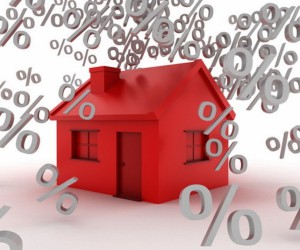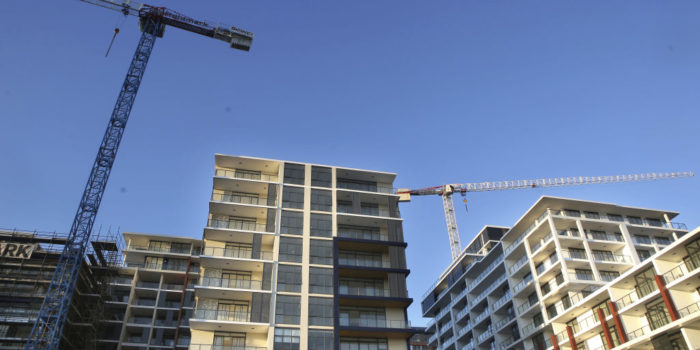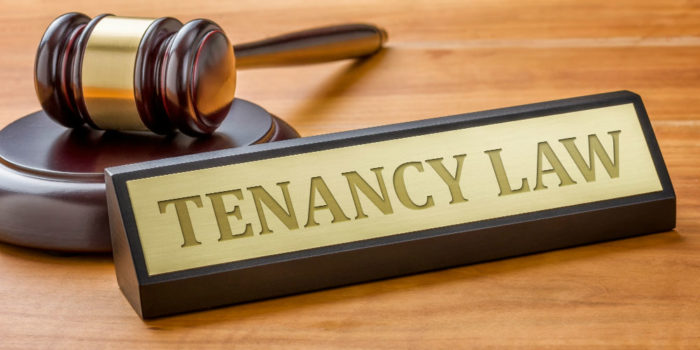We’re already well into a new year, in fact a new decade.
And that means it’s time that little creatures come out of hibernation – they’re called forecasters and their predictions of what lies ahead of us abound.
Story: Michael Yardney’s Property Update
These relate to all areas but particularly property because almost anyone who owns real estate would give their second garage to know what will happen to prices in the future.
But first it’s important to understand…
The difference between Forecasts and Expectations
I expect there to be a recession in the next decade.
 But I don’t know when it will come.
But I don’t know when it will come.
I expect that some investments I make won’t do well.
But I don’t know which ones they will be.
I expect the property market to boom and then prices will tumble again.
But I don’t know when.
I expect interest rates will rise.
Probably not for a number of years.
In fact, I don’t know when.
And I expect another world financial crisis.
But I have no idea when it will come.
Now these are not contradictions or a form of cop out.
You see… there’s a big difference between an expectation and a forecast.
An expectation is an acknowledgement of how things worked in the past and will likely work in the future.
A forecast is putting a time frame to that expectation.
Of course, in an ideal world we would be able to forecast what’s ahead for our property markets with a level of accuracy.
But we can’t, because there are just too many moving parts.
Sure, there are all those statistics that are easy to quantify, but what is hard to identify is exactly when and how millions of strangers will act in response to the prevailing economic and political environment.
Then there will be those X factors that crop up each year- those unforeseen events that comes out of the blue, which could be local or overseas that undo all the forecasts we made.
So what should you do about this?
I’ve found the most practical approach is to have expectations of what could happen without specific forecasts.
 That’s because when you expect something to happen at some stage in the future, you’re not surprised when it happens.
That’s because when you expect something to happen at some stage in the future, you’re not surprised when it happens.
Expecting the worst while preparing for the best forces you to invest with room for error, and psychologically prepares you for the inevitable disappointments.
This is exactly how I planned for the most recent property downturn.
I didn’t know when it would come, how long it would last or how it would affect the value of my property portfolio or the cash flow of my business.
But I just knew a downturn would come once again, and I was prepared for it with cash flow buffers to see me through the difficult times.
What I’m trying to explain it that there’s a huge difference between, “I expect another next property downturn sometime in the next decade” and “I expect the next property downturn in the second half of 2024.”
One of the big differences is how I invest.
 If I expect this new property upturn we’re experiencing will be followed by another property downturn, then I won’t be surprised when it comes.
If I expect this new property upturn we’re experiencing will be followed by another property downturn, then I won’t be surprised when it comes.
But since I don’t know when this will happen, I won’t make the focus of my property investing trying to time the property cycle.
Because trying to time the property cycle is one of the reasons many property investors fail.
On the other hand, strategic investors maximise their profits during booms and minimise their downside during busts by investing in assets that have always outperformed, rather than looking for the next hot spot or for the type of property strategy that works “now” rather than one that has worked in the long term.
They own investment-grade assets in investment-grade inner and middle ring suburbs of Australia’s three big capital cities.
The type of property that keeps growing in value over time without fluctuating wildly in price when the property cycle slows down.
So what’s ahead for property?
Having said that, I’d bet that you’d still like to know what’s ahead for our property markets.
I know some people suggest that if you want to know what lies ahead, start by looking at the clues behind you, but in my mind this new decade will be very different to the last decade.
Let’s start with…
10 things that will stay the same:
- Australia’s population will keep growing and adding around 400,000 people per annum.
 Net migration will continue to account for over half this increase, as we keep importing skilled migrants, mainly from South East Asia, to replace our retiring Baby Boomers in the workforce.
Net migration will continue to account for over half this increase, as we keep importing skilled migrants, mainly from South East Asia, to replace our retiring Baby Boomers in the workforce.
Australia’s population could hit 30 million by 2020 – up over 20% from 2017 and this population growth will remain concentrated in Melbourne, Sydney and Brisbane.
Despite government attempts to increase population growth in our regional centres, young people will leave regional Australia to move to the big smoke and migrants will only stay in regional locations for the length required by their Visa before they move to the capital cities.
- More congestion on our roads.
While it has been shown overseas that cities can be liveable despite having very large populations of many millions, the infrastructure and in particular public transport needs to be able to accommodate the population.
Unfortunately, Australia’s infrastructure growth has not kept pace with our rising population meaning roads will become more clogged and accommodation in proximity to public transport will become more sought after and relatively more valuable.
- Property prices will continue to increase, as they have since Federation, but some areas will increase in value more than others.
 Property values in the inner and middle-ring suburbs in our large capital cities, where the locals will be relatively wealthier and have more disposal income, will increase proportionally more than the outer suburbs.
Property values in the inner and middle-ring suburbs in our large capital cities, where the locals will be relatively wealthier and have more disposal income, will increase proportionally more than the outer suburbs.
Over the forthcoming decade, the poor will live further out than ever because the rich do not like commuting and will continue to live in our leafy more established suburbs close to amenities and public transport.
- We’ll have the requirement to build around 170,000 new dwellings each year, and currently falling short of this target.
- The property cycle will continue, with the long-term upward trend driven by owner-occupiers, while the cyclical ups and downs will be more driven by investors falling prey to fear and greed.
- Australians will continue to aspire to homeownership, which will continue to underpin our property markets.
A large percentage of the hundreds of thousands of migrants coming to Australia will also aspire to homeownership, in fact, that’s of the many reasons they have come to Australia.
However, over the coming decade more of us will move to medium and high-density living – apartments and townhouses.
- Ordinary Australians will continue to try and secure their financial future through property investment.
- The property pessimists will still be out there telling us not to invest and our property markets are going to crash.
- Property spruikers and get rich quick artists will still be there taking money from naïve property investors looking for a shortcut to get rich quick in real estate.
- We will be living in the best country in the world at the best time in history
Now let’s look at…
10 things that will be different over the next decade:
 1. We will have a long period of low interest rates and we’ll be in a low inflation environment for much of the decade.
1. We will have a long period of low interest rates and we’ll be in a low inflation environment for much of the decade.
This means we won’t get the same level of capital growth from all asset classes, including property, as we have in the past.
Similarly, yields for investors in residential real estate will remain low – probably around 3%.
2. In line with the low inflationary environment most Australians will experience limited wage growth over the next years and this will impact on their ability to afford property.
Over the last decade interest rates dropped from close to 10% around the time of the Global Financial Crisis to around 3% today.
This meant owing real estate became more affordable to both home buyers and investors as they could afford a bigger mortgage with the same income.
Moving forward this impetus to push up property values will not be there.
However certain demographics will have higher wages growth than average because of their jobs or because they may have multiple sources of income, and these people will be able to afford to pay more for their homes or for prime investment properties.
 The result will mean the rich will keep getting richer by owning the right type of properties.
The result will mean the rich will keep getting richer by owning the right type of properties.
Fact is: there has been very little real change in household income over the past ten years, with falls in real average household income since the last census, but nearly all households will have taken on more debt.
Yet there has been an increasing share of wealth held by the top 10% of wealthy households because they own real estate and have superannuation; a contraction in the size of the ‘middle class’ and a large increase in the number of Australians in struggle street.
3. Lower levels of home ownership
Difficulty saving a deposit will mean that there will be lower levels of home ownership for those in the typical first home buyer age group and possibly even falling levels of home ownership rates for those in their 40s and even 50s.
While 30% of Australian households were renting five years ago, I wouldn’t be surprised to find that two out of five households could opt to rent by the end of this decade.
 4. According to the census household size is increasing and over the next decade we’re likely to see more multi-generational clans living together as continued multiculturalism, rising house prices and an ageing population lead to an increase in the number of households that see children, parents and grandparents or living under the one roof.
4. According to the census household size is increasing and over the next decade we’re likely to see more multi-generational clans living together as continued multiculturalism, rising house prices and an ageing population lead to an increase in the number of households that see children, parents and grandparents or living under the one roof.
Plus, the mix from overseas has changed, with more migrants now coming from those countries with large family units.
However, falling birth rates mean that the proportion of younger age groups in our population will continue to shrink in the coming decade, while the share of older groups will rise rapidly.
5. At the other extreme there will be an increase in those living as a couple or alone as more of us live longer and live alone longer, especially women over 60 years; and sadly, most will have limited financial means.
6. The cherished dream of owning a quarter acre block with enough space for a game of backyard cricket will be nearly gone with more of us trading backyards for balconies and courtyards, while new land releases will be of much smaller sized blocks of land.
7. 30-40% of the jobs we know could disappear in the next decade and there will be a casualisation of the workforce.
 Many local jobs will disappear offshore while others will be replaced by artificial intelligence.
Many local jobs will disappear offshore while others will be replaced by artificial intelligence.
Now I’m not suggesting that this will lead to mass unemployment, instead it will lead to redeployment as a range of new occupations that we haven’t even thought of yet will come to light.
At the same time more of us will be working a range of casual or part-time jobs and as part of this trend, more oldies will be working than in previous generations. They will be doing so, because they have to financially, rather than because they want something to do.
8. Most Baby Boomers will have retired by the end of this new decade and Gen X’s will be coming up to retirement age.
Gone will be the oft promoted image of Australian retirement as a happy couple walking along a beach at dawn or dusk.
It will be replaced by the reality of weathered hands still working as many Baby Boomers will not have enough savings or superannuation to see them through their golden years.
 There are about five million people born between 1946 and 1964 and they are jumping into the space previously occupied by pre-boomers (born 1927-1945) who never numbered more than three million.
There are about five million people born between 1946 and 1964 and they are jumping into the space previously occupied by pre-boomers (born 1927-1945) who never numbered more than three million.
This means the pension and health care system just won’t be able to cope with the avalanche of Baby Boomers careening into retirement.
As life expectancy increases it will be necessary to push out the “official” retirement age and the age when the pension or health care benefits kick in.
Across the world the average age of retirement generally starts at 65 but already many countries, including Australia, are pushing this to 67 or 68.
At the same time these trends will ensure that Australia keeps importing more migrants of working age to keep paying taxes to support the retired Boomers.
9. As always, demographics will drive our property markets but increased high-density living, migration, multiculturalism and technological advancements are among the social changes that will lead to the development of a new set of “tribes.” These will include:
 Social singles – it is predicted by 2030 more than 26% of Australians will be living in single person households.
Social singles – it is predicted by 2030 more than 26% of Australians will be living in single person households.- Multigenerational clans – Continued multiculturalism and changing age demographics within the Australian population are tipped to increase the number of households that see children, parents and grandparents or living under the one roof.
- Homework tribes – It is possible that one in three people be employed on a freelance basis by 2030. This trend emphasises the an increasing need for at home workspaces as well as more spaces for communal work.
- Peter Pans – these are the Baby Boomers, many of whom will now be retired but want to live independently at home longer. They will not be looking for sea change, tree change or retirement villages, but will want to spend their golden years in the familiar locations, enabling them to continue enjoying their lives close to their families and friends.
10. We will be inundated with new technology we haven’t even dreamed of yet
At the same time, it’s likely we’ll become a cashless society and even credit cards could disappear in the next 10 years.
If you were a visitor to Australia today and came back in a decade, it’s unlikely that you would recognise our altered landscape.
Our cities would look very different but what wouldn’t change is that Australia will remain the best place in the world to live and we’ll with a queue of people clamouring to live here.



 Social singles – it is predicted by 2030 more than 26% of Australians will be living in single person households.
Social singles – it is predicted by 2030 more than 26% of Australians will be living in single person households.
